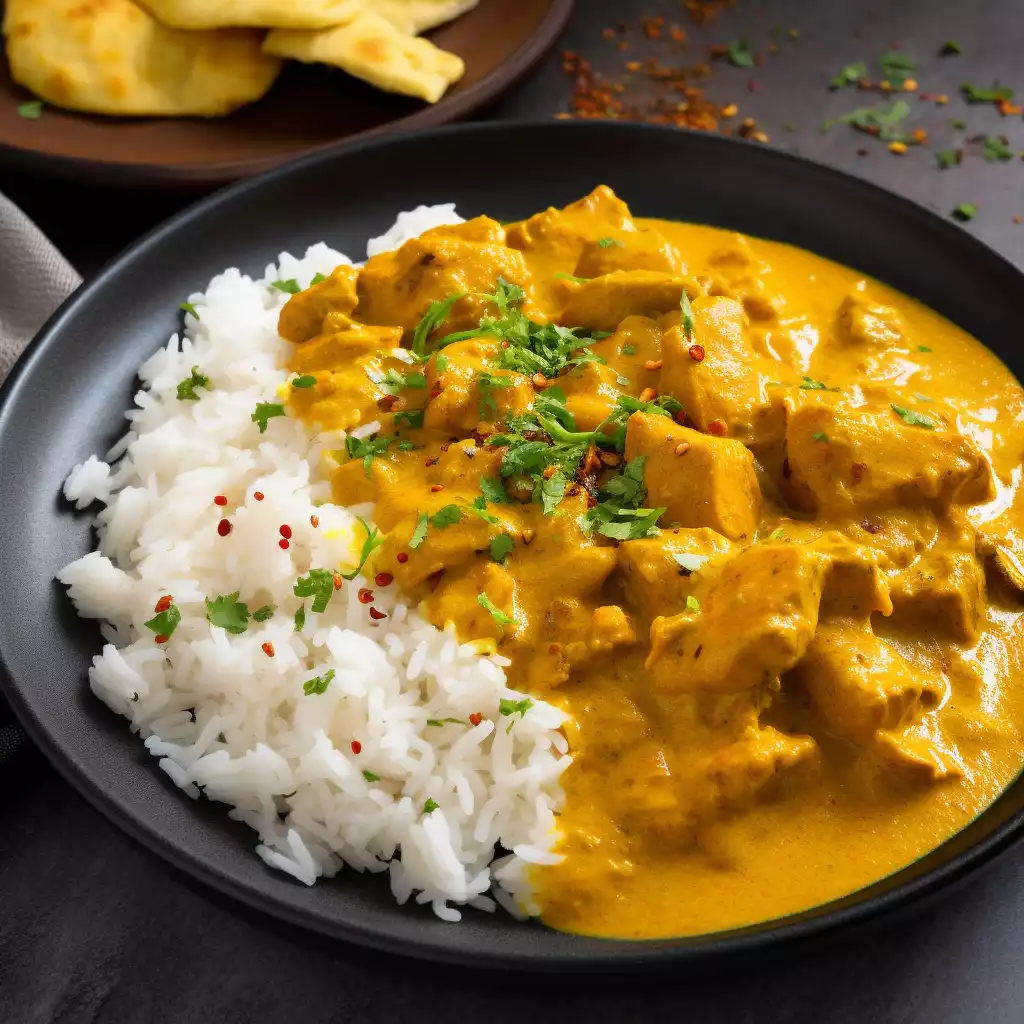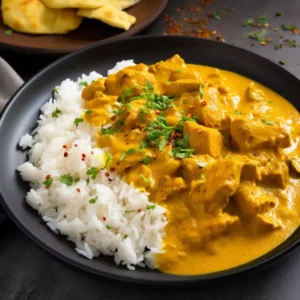
Welcome to a delightful journey into the aromatic world of Chicken Korma! Originating from the Indian subcontinent, Chicken Korma is a dish rich in history and flavor.
Its roots can be traced back to the Mughal era, where it was prepared for royal banquets, showcasing the opulence and sophistication of Mughal cuisine. Today, Chicken Korma continues to captivate taste buds around the globe with its creamy texture and harmonious blend of spices.
This recipe presents a wonderful opportunity for home cooks to dive into the realm of Indian cuisine. While it may seem daunting at first glance, fear not, for I will guide you through each step with ease.
From sautéing onions to simmering the chicken in a luscious blend of spices and cream, every moment spent crafting this dish is a celebration of flavor.
Embark on this culinary adventure and treat yourself to the sumptuous delights of Chicken Korma. Whether you’re cooking for a special occasion or simply craving a comforting meal, this recipe is sure to impress with its tantalizing aroma and velvety texture.
Expert Tip: For a dairy-free version, you can substitute coconut cream for the double cream to achieve a creamy texture without the use of dairy products.
Oil: The oil serves as the cooking medium for sautéing onions and spices, adding depth of flavor to the dish.
Onion: Finely diced onions provide a sweet and savory base for the Korma, enhancing its overall taste and texture.
Chicken: Tender pieces of chicken are the star of this dish, absorbing the rich flavors of the spices and creamy sauce.
Garlic Paste: Garlic paste adds a pungent aroma and robust flavor to the Korma, complementing the other spices.
Ginger Paste: Ginger paste lends a warm, peppery kick to the dish, balancing the sweetness of the onions and coconut.
Salt: Salt enhances the flavors of the other ingredients, bringing out their natural richness and complexity.
Sugar: A touch of sugar balances the flavors of the dish, rounding out any sharpness from the spices and yogurt.
Coconut Powder: Coconut powder adds a subtle nuttiness and creaminess to the Korma, elevating its flavor profile.
Turmeric Powder: Turmeric powder imparts a vibrant yellow hue to the dish and offers earthy notes to the overall flavor.
Garam Masala: Garam masala is a blend of aromatic spices that infuses the Korma with warmth and depth.
Coriander Powder: Coriander powder contributes a fresh, citrusy flavor to the dish, enhancing its complexity.
Yoghurt: Yoghurt adds a tangy richness to the sauce, balancing the creaminess of the coconut and double cream.
Double Cream: Double cream provides a luxurious, velvety texture to the Korma, making it irresistibly creamy and indulgent.
Expert Tip: Toast whole spices like cumin seeds and cardamom pods in the oil before adding the onions for an extra layer of fragrance and complexity.
Expert Tip: Marinate the chicken in yogurt and a pinch of salt for added tenderness and flavor before cooking.
Yes, you can absolutely use chicken thighs for this recipe. Just ensure they are boneless and skinless for the best results.
Yes, Chicken Korma reheats well and can be made ahead of time. Simply store it in an airtight container in the refrigerator and reheat gently on the stovetop or in the microwave before serving.
Certainly! You can substitute the chicken with tofu, paneer, or mixed vegetables to create a delicious vegetarian version of this dish.
Yes, Chicken Korma can be frozen for up to 3 months. Allow it to cool completely before transferring it to freezer-safe containers. Thaw overnight in the refrigerator before reheating.
Chicken Korma is typically mild in heat, but you can adjust the spice level to your preference by increasing or decreasing the amount of chili powder or adding fresh green chilies.
Here are some more recipes for you to enjoy! If you my recipes don’t forget to rate and leave a comment.
If you have any recipe suggestions, please do not hesitate to ask me. A great way to stay in contact with me is through Instagram, Facebook, Twitter and YouTube. Don’t forget to tag me @CookwithNabeela in your recipe photos!

Subscribe now to receive my latest recipes directly in your inbox. Stay up-to-date and never miss out!

I love to cook! I want to share with you my favourite, delicious family-friendly recipes. I want to inspire you to create fantastic food for your family every day.
Latest comments (1)
Not to add Chicken Tika Masala Paste as an ingredient. As with the Lam Tika Masala which the family enjoyed